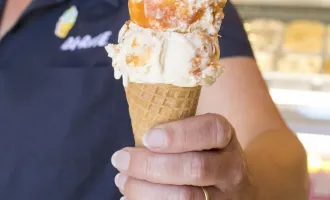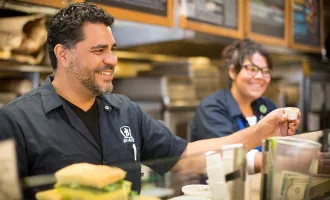Energy Drinks: The Truth About the Buzz
Eggnog and apple cider are holiday season favorites, but before enjoying either, students often find themselves gulping down untold amounts of caffeine and energy drinks to get through final exams. With that season upon us once again, the recent New York Times article exposing the possible involvement of the popular “5-Hour Energy” drink with 13 deaths over the last four years couldn’t have been more appropriately timed.
In the article, FDA officials confirmed those records, and also stated that in October, they had received another five fatality filings mentioning Monster, a popular energy drink. Moreover, since 2009, the FDA has received 30 filings implicating 5-Hour Energy in life-threatening cases including heart attacks, convulsions and a spontaneous abortion.
However, just because a report is filed on a product does not mean that the product was responsible for the associated injury or death. The Times article also states that “the Substance Abuse and Mental Health Services Administration reported late last year that more than 13,000 emergency room visits in 2009 were associated with energy drinks alone.”
On a medical science campus like UCSF, caffeine and energy drink use and abuse is widespread. With students studying for finals, interns working round the clock, and faculty juggling teaching, research and clinical responsibilities, caffeine becomes a way of life.
UCSF experts weigh in
But how much is too much? Caffeine, after all, is a potent compound that affects multiple physiological systems.
“Caffeine is a central stimulant, and it acts to prevent inhibition of the brain’s inherent stimulants, the neurotransmitters dopamine and glutamate,” explains Marieke Kruidering-Hall, associate professor of Cellular and Molecular Pharmacology. “Effectively, the brain goes in overdrive."
In addition, caffeine intake results in the release of neurotransmitters that act on the heart, increasing its rate and contractility. Recent reports in the news media about deaths associated with energy drinks have particularly focused on caffeine’s effect on the heart. However, the risk of having an adverse cardiac event from knocking back a few coffees or an energy drink seems to be minimal for the majority of people.
“For the most part, the usual amount of caffeine the people get with a regular cup of coffee or even two cups of coffee is generally safe,” remarked Dr. Byron Lee, Associate Professor of Clinical Medicine in the Department of Cardiology. “People who have normal hearts don’t have dangerous outcomes when they drink that much coffee.”
There is a risk, however, for individuals with heart disease who are particularly sensitive to changes in heart function. These include those predisposed to arrhythmias or abnormal heart rhythms, and those prone to having seizures.
So what’s the cardiologist’s recommendation for patients who want to consume energy drinks? “I would say that if you use these drinks, feel fine and haven’t had any problems with it, and you have no medical condition, then you’re probably fine,” remarked Dr. Byron Lee. “But if you have medical conditions that may be exacerbated by increases in adrenergic tone or sympathetic stimulation [essentially, an increase in heart rate and contractility], then you need more caution.”
The facts on caffeine content
It is often impressive to consider the number of people who consume caffeinated beverages but have no clue about the relative amounts of caffeine in them. For example, a 16-ounce brewed coffee has almost double the caffeine of a 16-ounce single latte (300 milligrams vs. 150 milligrams, on average). Staying with the coffee theme, medium roast coffee has more caffeine than dark roast, because the prolonged heat of heavier roasting breaks down caffeine molecules.
Likewise, more finely ground coffee has a higher caffeine content, and the longer a coffee is brewed, the greater its caffeine level. One scoop of coffee ice cream has more caffeine (45-75 mg per serving) than a can of Coke. In fact, coffee has so much caffeine that you would have to drink an entire 2-liter bottle of Coke to equal the amount of caffeine in a 12-ounce cup of Starbucks coffee!
Getting your fix on campus
For those of you who are looking to use caffeine and energy drinks responsibly, there are many options on UCSF’s campus. If coffee is your jam, just look up — it’s everywhere, from Palio, Peet’s and Starbucks to the humble coffee machines that grace various lounges and offices on campus. But for those looking for other sources of energy, you’ll have to look a little harder. The only places Rockstar (sugar-free and regular) and Monster energy drinks can be found on campus are in the vending machines adjacent to the Moffitt Cafeteria, and at the Do UC Us food truck on Parnassus (just east of Millberry Union). Mountain Dew can also be found at both of these locations and in the Nursing Cafeteria. Pepsi Max drinkers will need to make a special trip to Panda Express for their drink of choice. For Red Bull, you’ll have to head to the Moffitt Gift Shop or the pharmacy across from Starbucks.
Another go-to for a boost of energy on campus is actually Jamba Juice. Its 3G Charger Boost is “a natural blend of green tea, guarana and ginseng with 120 mg of natural caffeine,” and works in combination with the sugar, carbs and protein in its smoothies to keep you on your toes or focused on your work for hours. And of course, if you do choose to caffeinate this finals season, please make sure you do so wisely — armed with knowledge of numbers and side effects.


